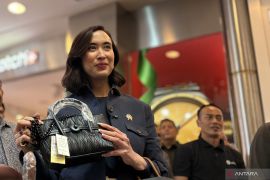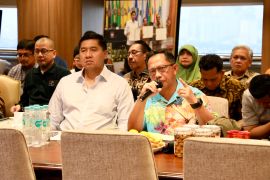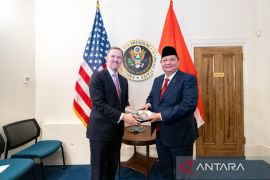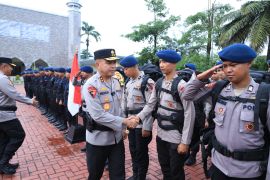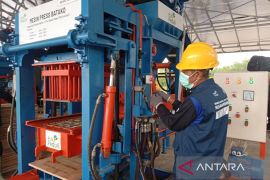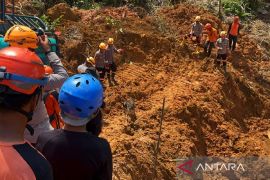NYON, Switzerland, Oct.13 (ANTARA/PRNewswire-AsiaNet) --
For this year's World Osteoporosis Day (October 20), the International Osteoporosis Foundation (IOF) is releasing a 24-page report promoting a three-step strategy for healthy bones and strong muscles.
To view the Multimedia News Release, please click
http://multivu.prnewswire.com/mnr/prne/iof/52143/
Professor Heike Bischoff-Ferrari, director Centre on Aging and Mobility at the University of Zurich/Waid City Hospital and author of the report, stated, "Put simply, no matter how old you are you can optimize your bone health by following three essential steps."
"First, you must ensure sufficient vitamin D intake. Secondly, your diet should include adequate amounts of calcium and protein. Finally, you should make sure that you're doing daily weight-bearing and muscle strengthening exercise."
She emphasized that to be effective, all three components are required in combination. "The benefits of healthy nutrition and adequate vitamin D enhance the benefits of exercise, and visa versa," says Prof Bischoff-Ferrari.
The report raises the critical issue of falls and fall-related fractures in seniors. In addition, the report also notes:
- Adequate calcium and protein intake can best be achieved through a nutritious diet that includes dairy products, nuts, beans and certain calcium-rich greens, fruits and mineral waters. Dairy products offer the greatest amounts of calcium and also provide protein.
- Seniors with decreased protein intake are more vulnerable to muscle weakness, sarcopenia and frailty - all contributing to an increased risk of falling and fracture.
- Vitamin D is produced in the skin upon exposure to sunlight. Food sources of vitamin D are rather limited, with small amounts found primarily in fatty fish and eggs.
- As evidenced by the high rates of vitamin D deficiency around the world, most people cannot achieve adequate levels of vitamin D from sunlight. The reasons include: little sunshine in the winter months at latitudes above and below 33degree(s), cloud cover and air pollution, use of sunscreens, wearing clothing that covers most of the body, and the general trend towards indoor lifestyles in both young and old.
- Skin production of vitamin D declines with age, leaving seniors with a four-times lower capacity to produce vitamin D compared to younger adults.
- In seniors vitamin D supplementation has been found to reduce the risk of falls and fractures by about 20%. IOF recommends vitamin D levels of 800 to 1000 IU/daily for all people at risk and for everyone aged 60 and older.
- Daily physical activity is absolutely essential for bones and muscles strength at all ages.
- The most effective exercises are weight-bearing activities such as running, climbing stairs, jumping or brisk walking, as well as muscle-strengthening exercises such as weight-lifting.
- Weight-bearing exercise programmes that improve gait speed, muscle strength and balance in seniors can translate into a 25-50% reduction in falls.
- Smoking, excessive alcohol and being underweight (body mass index below 19) have been shown to have a negative impact on bone health.
Professor Cyrus Cooper, chair of the IOF Committee of Scientific Advisors, says, "Bone health is important at all stages of life. I urge everyone to follow the recommendations provided by this report. Adequate calcium and protein, vitamin D and daily exercise are the three key ingredients that help to maximize bone development and growth during childhood and adolescence."
"In adults they help maintain and improve bone mass and muscle strength. For seniors, exercise programmes should specifically include muscle-strengthening and balance training. Together with adequate protein intake and vitamin D supplementation, this has been shown to be of great benefit in reducing falls and resulting fractures."
More information about World Osteoporosis Day and to download the report 'Three Steps to Unbreakable Bones: Vitamin D, Calcium and Exercise' visit http://www.worldosteoporosisday.org
About IOF
The International Osteoporosis Foundation (IOF) is a non-profit, nongovernmental umbrella organization dedicated to the worldwide fight against osteoporosis, the disease known as "the silent epidemic". IOF's members - committees of scientific researchers, patient, medical and research societies and industry representatives from around the world - share a common vision of a world without osteoporotic fractures. IOF now represents 199 societies in 93 locations. http://www.iofbonehealth.org
For more information contact:
Caleb Starrenburg
Communications Coordinator
International Osteoporosis Foundation
Email: cstarrenburg@iofbonehealth.org
Phone: +41-22-994-01-04
SOURCE: IOF-International Osteoporosis Foundation
Editor: PR Wire
Copyright © ANTARA 2011
